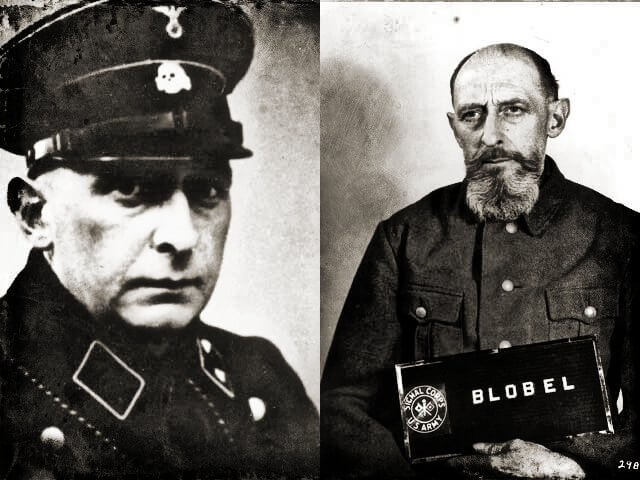Action 1005 – blurring the traces of crimes
Action 1005 – code name of the action carried out by the Germans during World War II, aimed at blurring the crimes committed by SS/WH/SD units, including the Einsatzgruppen mainly in eastern and central-eastern Europe. After the mass crimes, the bodies of the victims were buried in the ground. A decision was made to exhumate and cremate the bodies in the field crematoria, grates for burning the corpses, and in pits and furnace piles. The operation covered both the sites of mass executions and the sites of already liquidated concentration and extermination camps.
After the discovery of the mass graves of NKVD victims, including in Katyn, and following the defeats on the Eastern Front, as well as for epidemiological reasons, an order was issued to cover up the traces of mass crimes. A special brigade under the command of Paul Blobel was established. Previously, he was one of the highest officers of the Einsatzgruppe C (the commander of the Sonderkommando 4a), officially dismissed for health reasons (in fact abusing alcohol).
Sonderkomando 1005 unit began its operation in 1942, in the occupied territory of the USSR. The commando consisted mainly of Jewish prisoners whose task was to dig up mass graves and burn corpses on special pyres or furnace grates. The bones were ground in specially designed machines (mills). From time to time, the members of the commando were killed (as they were eyewitnesses) and replaced with another group of prisoners. From June 1943 to mid-1944, units of the Sonderkommando 1005 blurred the traces of crimes in the occupied territories of Poland and in the Baltic countries. Local Sonderkommandos were also created in the area from Estonia to Yugoslavia.
Sonderkommando 1005 together with Paul Blobel blurred, among others, traces of the crimes in the Kulmhof camp, which in 1943 ended the first stage of its operation. During this action, Rudolf Hoess appeared, the commandant of the Auschwitz camp, to whom Blobel gave instructions on the subject of "obliterating the evidence of the crime". As part of Action 1005, attempts were made to blur the traces of the crime, incl. in the extermination camps in Treblinka, Sobibór and Bełżec, where Paul Blobel and his team were not allowed into the SS Sonderkommando Bełżec camp.
After the war, Paul Blobel was indicted in the ninth Nuremberg trial, i.e. in the Einsatzgruppen trial, incl. for participating in the Babi Yar massacre. According to the tribunal's estimates, the number of people killed by direct and indirect actions of Paul Blobel was approximately 59,000. On April 10, 1948, Blobel was sentenced to death by hanging. Together with three other Einsatzgruppen officers, he was executed on June 7, 1951 in Landsberg Prison.
I also recommend the book: Leon Weliczker - "Death Brigade. Diary of a prisoner of Sonderkommando 1005"
Zdjęcia archiwalne - domena publiczna. Jeżeli zostały naruszone prawa autorskie proszę o kontakt. Zdjęcia zostały umieszczone w celach informacyjnych, nie zarobkowych, ani zawierającej krypto reklamy.


